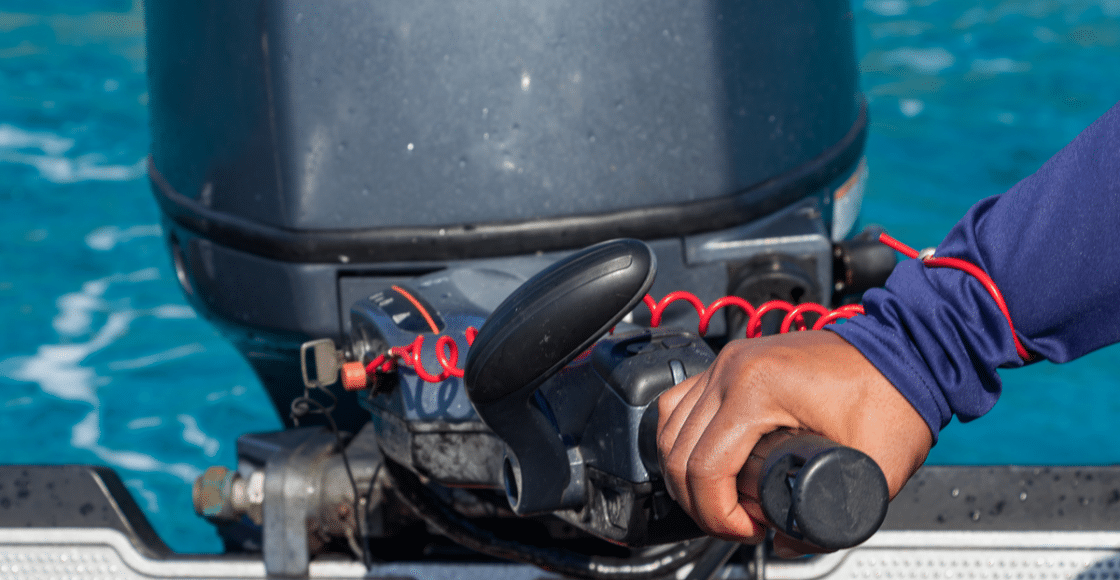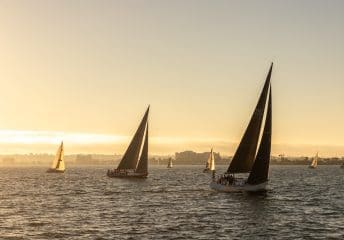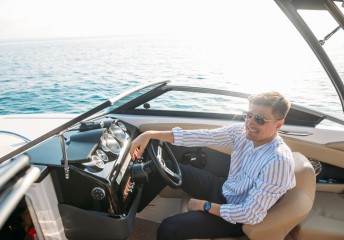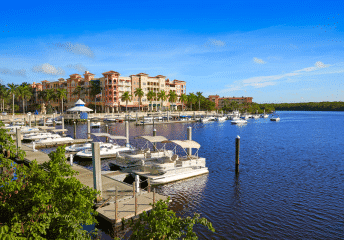What is a Tiller on a Boat?
Last Updated on February 24, 2022 by Boatsetter Team
A tiller is a lever that is attached to the rudder and is used to turn a boat. Tillers are used on power and sailboats, and a tiller and rudder combination is the simplest way to steer a boat.
Or, the steering system can be very complex, with multiple rudders and steering components that must be aligned to work correctly. These more complicated steering systems can be attached to a tiller or wheel. Even with multiple rudders, some boats use tillers, some don’t, and a select few offer both.
Using a tiller is backward from using a steering wheel and takes a bit of getting used to. The steering wheel is turned in the direction you want to go. However, you push a tiller the opposite of the direction you want to take.
Whether sailing an eight-foot pram or an eighty-foot schooner, your boat will have a rudder. The difference between the two is how they turn that rudder. The pram will use a tiller. The schooner, however, will likely use a very large wheel to set its course.
What is the difference between a rudder and a tiller?
The rudder of a boat protrudes into the water from where it hangs on the transom, or it can be placed under a boat. On the other hand, the tiller is the lever one moves from side to side, making the rudder turn.
A rudder is a blade in the vertical position, and it acts as a foil. Rudders can be constructed from wood, fiberglass, aluminum, or carbon fiber. As water passes over the rudder, its position determines the course of the boat. The tiller is a lever that you use to turn the rudder to steer a boat.
On many power and sailboats, the rudder(s) are out of sight beneath the hull. For this type of design, the tiller is fitted to a post. The post is attached to the rudder, and it is fitted under the boat.
When steering with a tiller, it is moved opposite of the direction you want to go. It doesn’t take long to grow accustomed to using a tiller, and you have already used one if you have ever used an outboard motor that is so equipped.
Where is a tiller on a boat?
It can be to the rear of the boat (astern), or it can be forward of that location and be fitted to a pipe that comes through the boat’s decking. Wherever it is located, its length and fittings (cleats, lines, and self-steering system attachments) are different from boat to boat.
What remains the same is that the tiller is what you use to steer the boat when so equipped. Tillers are often seen on boats less than 30 feet in length and predominately on sailboats. However, even some powerboats use a tiller for steering, and they are still used on many fishing and pleasure boats.
A tiller is chosen over a wheel for steering a boat because it is simpler and easier to repair if it breaks. In addition, the components of a steering system add weight to a boat and can be complicated.
A few newer style boats, such as sailing and ocean kayaks, use foot pedals attached to pulleys that lead to the rudder and move it side to side. This type of system works well on some boats but not on others.
Small outboard motors have a tiller.
Small outboard motors have a tiller attached to them to turn the motor and control the engine’s speed. These are usually seen on outboard motors that are 15 horsepower and below. However, they even offer tiller extensions for use on some boats.
Although they lack a rudder, the principle is the same, and the motor’s thrust takes its place. Outboard tillers house the throttle on many models, and others offer more features than a throttle alone.
A boat’s steering system
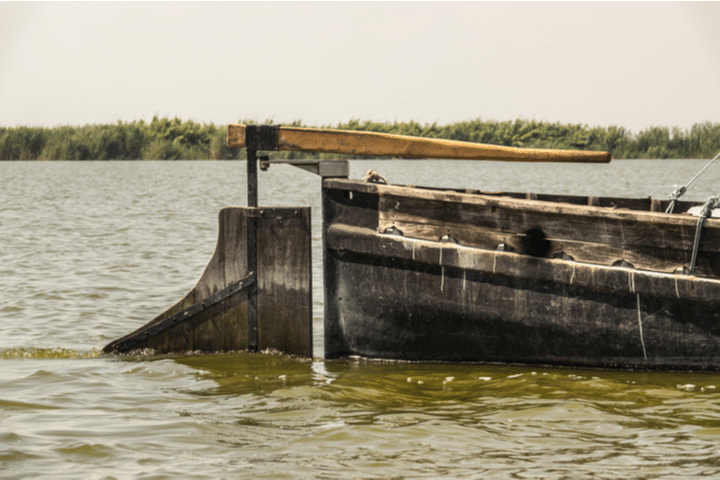
The most rudimentary steering system for a boat is a paddle. When wielded by someone with skill, paddling is very effective. Next up are oars for propulsion and steering, and again, a person skilled with oars can spin a boat within its own length.
On up the evolutionary trend of boat design came the long oar, strapped to the stern of large craft and used to steer. That was an unwieldy arrangement, and the designers forged on until they came upon rudder after decades of messing about with paddles as rudders.
The affixed rudder and tiller combination came on the scene around the 1st century. Voila, the tiller, was born and was the primary method of steering a boat until someone developed a pulley system attached to the rudder with rope or steel cable.
Even today, with modern wheel steering systems, some world sailors prefer the simplicity of a tiller, even on large sailing vessels. It is more straightforward, not as prone to problems, and is relatively easy to repair. Tillers can be made of wood, aluminum, carbon fiber, or almost any other stiff, durable material. You can fit a tiller with extensions, tiller pins, and attachments for self-steering systems.
What is a tiller pin used for?
Tiller pins are metal pins that allow one to detach the tiller from the head of the rudder very easily. A tiller pin also allows the tiller to hinge upward. This will enable you to store it out of the way when a boat is moored.
Other than sailboats, and some powerboats, tillers are used on narrowboats. A narrowboat is a canal boat that is used predominately in Europe. Most of them use rudders with which to steer, to which a tiller or tiller bar is attached.
The tiller pin on a narrowboat is often a decorative metal piece with a specific purpose. It performs the same task as it does on dinghies and creates a hinge point that allows the tiller to be bent back 180 degrees so that it is out of the way of the cockpit when moored.
What is a Norwegian tiller?
The Norwegian tiller is but another idea that facilitates steering a sailboat. Due to the design of a boat, tillers have been crafted to overcome fitment on double-ended sailboats and on boats whose rigging lies in the path of where a tiller generally resides.
Thus, the Norwegian tiller is placed at a right angle to the rudder instead of aligning with it. The tiller is then fitted with a stick with which you push or pull the tiller to steer.
Methods of steering a boat have evolved; however, some of the old ways of doing things have been proven to work well. For example, rudders and tillers may be more high-tech than 50 years ago, but they still serve the same purpose; they are used to steer a boat.
Learning the Ropes of Boating
Whether you’re a novice boater or have been around them for decades, boat designs are continually evolving, and the evolution makes them more costly. So let’s face it, boating is expensive, and the best way to learn if you like to sail, fish, or even go boating is to get on the water.
At Boatsetter, a local fleet of boats awaits your adventures. The fleet is comprised of sailboats, fishing boats, ski boats, yachts, and houseboats. They offer you endless opportunities to find what boating niche suits your fancy. So, no matter where you live, finding a boat to sail, or one with which to chase a prized bass, there’s likely a Boatsetter boat near you.

Boatsetter empowers people to explore with confidence by showing them a world of possibility on the water. Rent a boat, list your boat, or become a Boatsetter captain today.
